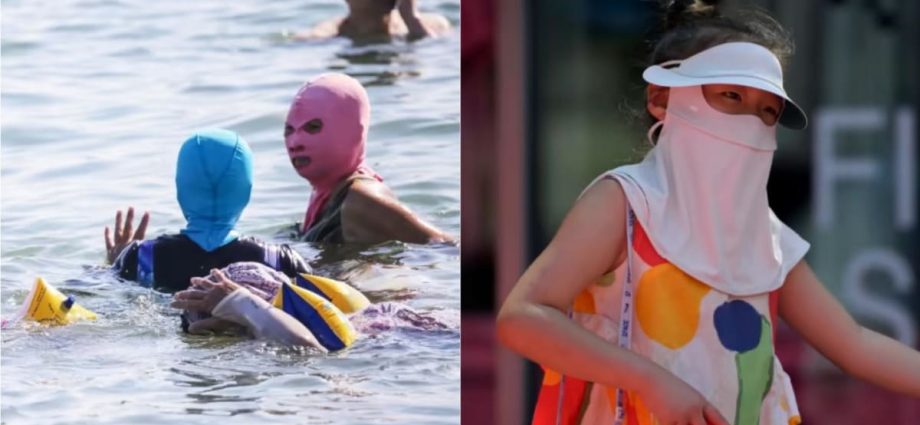
WE’RE TOO SELF-CONSCIOUS
But it’s unlikely the facekini will find its place in Singapore for now, even with our year-round summer climate. According to the National Environment Agency, UV radiation can reach very high levels between 11am and 3pm on a day with little cloud cover in Singapore.
Women here may be willing to spend on our beauty routines but we are still a relatively coy bunch who will be too self-conscious walking around the beach or downtown in a facekini. The humidity certainly doesn’t help encourage us to put on an accessory likely to make us perspire even more.
It’s far easier to hide from UV rays under an umbrella or dodge into an air-conditioned shopping mall.
Those who do rigorous sports may also find a facekini inconvenient compared to slathering on sunscreen or wearing a cap for UV protection.
Something that offers sun protection while being more discreet than a facekini may yet find its market here.
A recent trend of using “sun patches” has already picked up in South Korea. These are UV-protective plasters pasted on the high points of the face where UV rays tend to hit first to act as a physical barrier and help with sun protection.
These first gained popularity among golfers and are beginning to be seen on Korean beachgoers, especially after members of K-pop boy band SEVENTEEN were seen using them in a TV programme.
And if the trend of using sun protection accessories goes on in South Korea, it might not be long before the beauty-conscious crowd decides to go all out and invest in a well-designed, more fashionable facekini.
So hold in your laughter for now. Because who knows, after a few K-pop idols are seen wearing it for both sun protection and privacy, we may start seeing trendy people in facekinis lounging along the beaches of Sentosa.
Kristen Juliet Soh is the editorial director and co-founder of Daily Vanity.

